Today is a milestone over at Plot This. SF has hit the BIG ONE!!!!!!!!!!! And to begin the celebration (which is lasting a full week) I am having a tea party for her this morning at my house.For this special event, we (her writing group) are recreating her picture book, TEA PARTY.
It's a Burton-esque masterpiece for a budding little goth girl.Many pics and commentary will arrive shortly. This is the table. Notice the melted candles, stuffed squirrel, cobwebs and bugs! Not to mention the eleven dead roses hanging upside down from the chandelier. She is gonna freak!
HAPPY BIG ONE SF!!!!!!!!! I love ya!
This is me with black goth dripping from my eyes. Gotta go get ready! More pics to come!!!
Viewing: Blog Posts Tagged with: channel, Most Recent at Top [Help]
Results 26 - 34 of 34
Blog: Plot This (Login to Add to MyJacketFlap)
JacketFlap tags: photo, aging, Tea Party, Add a tag
Blog: Silver Apples of the Moon (Login to Add to MyJacketFlap)
JacketFlap tags: POBL retreat, Hood Canal, tea party, Add a tag
Our spring retreat is supposed to be a little more low-key than our fall one - it's a bit shorter, and we try to be much less ambitious with the food... Except for the amazing High Tea put together by the amazing POBLite, Sarah -
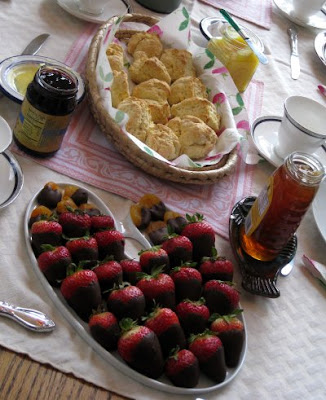
Blog: kathy hare illustration (Login to Add to MyJacketFlap)
JacketFlap tags: cat, tea party, bluebird, ogre, sugary, girl, dog, autumn, Add a tag
Blog: jama rattigan's alphabet soup (Login to Add to MyJacketFlap)
JacketFlap tags: grace lin, tea party, Add a tag
"Your work is to discover the world and then with all your heart give yourself to it." ~ Buddha

Last year, children's author/illustrator Grace Lin was asked in an Edge of the Forest interview what she would say if she had the complete attention of everyone in the United States for thirty seconds. Grace quoted Buddha, and if the body of work she's produced during the last 10 years is any indication, she has definitely lived by those words.
Talented, prolific, critically acclaimed and beloved by her readers, Grace has illustrated ten picture books and written and illustrated a dozen more. Her use of bold colors, intricate patterns, swirls, and charming details mark a distinctive style that engages, delights, and invites the reader to look closer.
In 2006, Grace's first middle grade novel, The Year of the Dog, received tons of accolades, including Kirkus Best Early Chapter Book, ALA Notable Book for Children, and a National Parenting Publication Gold Award. The Year of the Dog is autobiographical, picking up where her picture books, The Ugly Vegetables, Dim Sum for Everyone, Fortune Cookie Fortunes, and Kite Flying leave off. Readers everywhere have fallen in love with Pacy Lin, her best friend, Melody, and her sisters, Lissy and Ki-Ki.
This year, a much-anticipated sequel, The Year of the Rat, was released along with yet another gorgeous picture book, Bringing in the New Year. In The Year of the Rat, we are treated to more of Pacy's joyous, funny, and poignant experiences. Much like the classic Little House or Ramona books, these stories leave us craving more about this family and Pacy's world, so full are they of heart and universal truth. Bringing in the New Year focuses on the preparations for Lunar New Year, complete with homemade dumplings and a dragon dance, with pictures that pull us right into the action.
I couldn't think of a better way to top off Tea Party Month, than with Grace as my special guest of honor. I'm sure you've noticed how often she writes about food, using it as both subject and metaphor. She's definitely my kind of girl -- and she's even brought cupcakes!
Both trips were tremendously inspiring for me. In China, I was fascinated by the mixture of modern and ancient. I was taken by the green lushness of the countryside next to urban cities. I really want to do books set in both countries. I'm crossing my fingers that seeds of the ideas that have sprouted in my head bloom.

Grace eating jianbing (Chinese crepe) in China
You've said that The Year of the Rat is your most revealing work, since it forced you to examine your own prejudices. The main character, Pacy, doesn't want to be associated with the new Chinese boy, Dun-Wei, because small things about him make him "stick out like a big mistake." Were any of your own preconceived notions about China or Taiwan altered after visiting these two places? Were you pleased or surprised by how Americans were treated?
Both places were so much more vibrant and richer than I imagined. But there were more small differences than I anticipated. For example, purchasing things in China is a multi-step process; bargaining is always expected. In Taiwan, the garbage trucks play music that sound like American ice cream trucks. Those unexpected little things made me realize how wonderful and important it is to experience other cultures in person.
In China, it seemed like many considered foreigners to be rich, which made me a target for possible scams and bad ends of many bargains. But other than that, I think Americans are treated well, though a little bit like animals at a zoo depending on where you go. I remember a group of waiters being fascinated by my sister and me -- first, that we were sisters (a rarity in one-child policy China), and that we could barely communicate in Chinese.
Taiwan, being more westernized, did not have the "scam the foreigner" problem, though bargaining was definitely to the native's advantage. And all wanted to know what country I was from.
Many of your books are either about food, or include tasty references to food. In The Year of the Rat, food is used to describe people (Sam Mercer looked like a giant gingerbread cookie), the landscape (a streak of light in the sky looks like "milk just poured into tea"), and emotions (Pacy "felt like a popcorn kernel about to pop"). Is this how Grace Lin sees the world? How would you describe yourself in terms of food?
Well, I learned in Taiwan that the Chinese character for "beauty" is actually made up of the characters for "big" and "sheep." A big sheep obviously meant a delicious meal; the character implies a beautiful taste. So, early Chinese equated good food with beauty, which is something I do as well! Though, I would prefer not to think of myself as a fat sheep.


Along with the succulent descriptions of the New Year's dinners which frame the book, I love the funny chapter about Melody's mother and her tasteless, healthy cooking, and the poignant canned meat story told by Pacy's mother. Did these things actually happen? For the most part, are the tales related by Pacy's mother actually ones your mother told you?
The chapter about Melody's mother's healthy cooking is based on true life. The character of Melody, as many people know, is based on my friend and editor Alvina Ling. Her mother was and still is very health conscious, and her cooking was a bit of a joke amongst the Taiwanese community -- she herself told me how people say, "when I go to your house to eat, you make me eat grass." Anyway, I swear she served us a macrobiotic dinner when I first went to Alvina's house, though Alvina says she did not.


Grace and Alvina then and now
All the stories that Pacy's mother tells are the stories my mother told me. The ones in The Year of the Dog are pretty much true and almost all the ones in The Year of the Rat are true as well; the ones that are not exactly true were based on real events -- the canned meat story actually happened to an aunt.
Both The Year of the Dog and The Year of the Rat are brimming with so many wonderful cultural traditions. Did you have to do much research regarding these, or were most of them pretty much second nature to you?
It was a mixture of both, though probably more research than you might guess. What was really fun while doing research was discovering that things that my family had always done but I had never thought of were actually Chinese customs with ancient reasoning. For example, we always had nine courses at a Chinese wedding -- I just thought we had nine courses because that was what the restaurant preferred; when in reality it is to symbolize the "forever" nature of the marriage (the Chinese word for nine sounds like the word forever).
It was even more humorous when I mentioned these things to my parents. Sometimes they nodded, "of course," as if I should have known by some sort of osmosis; and other times, they were surprised themselves. I guess their parents assumed that they would know through osmosis as well.
Which is easier for you, writing or illustrating? What are some of the special challenges involved in writing autobiographical stories? Multicultural stories?
It's hard to say as it is like apples and oranges. However, for me the writing always has to come before the illustrating; the writing is what dictates the illustrating.
I think the biggest challenge when writing autobiographical stories is to really let go. Many times people like to keep things private; don't want others to know embarrassing or personal thoughts. But those are the things that are most interesting and perhaps what you most want to tell. Once you let that go, truly open yourself up to the page -- then real writing happens. After that, the challenge is to figure out what events are interesting to an audience, not just yourself because it happened to you.

Grace's first picture book, published by Charlesbridge in 1999
You've said The Ugly Vegetables is your favorite picture book, and I assume Lissy's Friends is your older sister's favorite. Which of your books do your Mom, Dad, and younger sister like best, and why? Is Ki-Ki getting her own book?
My parents definitely like Year of the Dog best; in fact, I think writing that book was what finally made them do the 360 degree turnabout on my career. Before that, they were always a bit hesitant. The Year of the Dog was the book that made them not only understand what I was doing but appreciate it. It helped that it was about them, of course!

Beatrice (Lissy), Alice (Ki-Ki) and Grace (Pacy)
Ki-Ki's favorite is Okie-Dokie, Artichokie!, a book that went out of print quickly. The joke is if she likes the book, it won't do well; which may be why there is no Ki-Ki book yet. But perhaps I will attempt to thwart the Ki-Ki curses in the future.
Could you explain how you made the pictures for Bringing in the New Year? And I have to ask about your trademark swirls! When and why did you start incorporating them in your illustrations?

Bringing in the New Year was fairly straightforward, as most of the images I could draw straight from my head. I did look at photos of dragon and lion costumes, Chinese patterns for the clothing, etc., but it was not a book that needed huge amounts of photo references or research for me. That is probably where I am at my best, when I am not bound by too many real details and so I can concentrate on the details in my head.

Rough sketch from BRINGING IN THE NEW YEAR
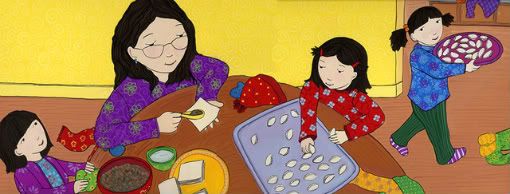
The swirls are something I began at the end of my senior year at RISD (Rhode Island School of Design). I loved bright colors and graphic shapes, but flat planes of color were not satisfying enough for me. I enjoyed adding intricate patterns on people's clothes, so putting patterns on everything just kind of spilled over. When I do patterns, I like to tie it into the concept or idea of what I am painting -- like in Lissy's Friends, which is about origami, all the patterns in the book are inspired by origami paper. So, I did the swirls in the sky as a kind of Van Gogh "Starry Night" homage pattern and I liked how it gave a texture but still fell back -- and it's stuck ever since.
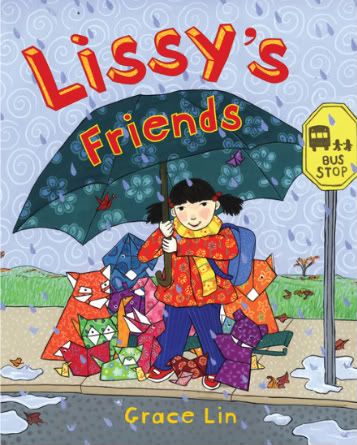
What is the typical timeline for one of your picture books?
It's hard to say a typical timeline for my picture books. The range from idea to dummy to painting has been anywhere from 2 years to 10. Once a book is contracted, it takes me at least 6 months to do the finished art -- but usually I've worked on the project for a long time before that. I tend to get books contracted at the dummy stage -- when everything is pretty much ready to go to final.
From the delightful endpapers to the absolutely stunning gatefold spread at the end, the art for Bringing in the New Year is really a tour de force of composition, color, detail, and emotive energy. Do you consider it your best work? How are you challenging yourself to maintain this high standard, while continuing to grow and move in new directions as an artist?
I am happy with the art in Bringing in the New Year. There are a couple of pieces I wish I could redo, but it is probably the published book I am most satisfied with artistically as a whole. I'm not sure if it is my best work -- I guess I am hoping my best work is still to come!

Rough sketch of gatefold spread from BRINGING IN THE NEW YEAR

In the last couple of years I've been doing books very quickly with very long hours, more out of financial necessity than artistic discipline. I feel confident that my new schedule of more time for fewer projects will make my work better.
But honestly, I don't really think about "growing" or "challenging myself" too much. I try to take each project individually and do the art in the best way that fits the story -- I don't go into a project saying, "I want to break out and do oil painting so I'm going to make the art look like Michelangelo's!" The story always comes first for me; if I think a story needs a new style (for example, I recently wrote a truck picture book which I visualize with collage elements), I will do it. But I let the story dictate the pictures -- not a desire to paint landscapes or flowers (though if I have those desires, I try to write stories about them). Anyway, perhaps all of this is sacrilegious of me to say as an artist and former art student!

Yum yum dim sum!
What are you working on now? Any genres you haven't yet tried, but would like to?
Right now, I am finishing up final (I hope) revisions for my new novel, tentatively titled, Where the Mountain Meets the Moon. It is a Chinese folktale-inspired fantasy, very different from my prior books. I guess this is an example of what I was talking about in the above question -- I am going to try to make the images more decorative, like cloisonne or willowware patterns, as I feel this book calls for a more formal style. I'm very excited about this book; I think it is my best writing to date and I am kind of bursting with pride over it. Though that might be a short-lived feeling!
After this novel is finished, I will be working on Ling and Ting, which will be an early reader featuring Asian American twins. I'm so happy to be working in the genre; my favorite books when I was young were books like Frog and Toad, Snip, Snap and Snurr, and Flicka, Dicka, and Ricka; to do this book is really a great gift to my childhood self. Since the writing in this book will be spare and stylized, the illustrations are also going to be more stylized and simpler than my picture books -- another example of my answer to the above question!

I've played around with the idea of a graphic novel, a YA novel, even an adult book -- but none of them have really taken root. Most recently, I've been thinking a pop-up book would be a lot of fun. That and dishware design. Maybe someday!
Please describe a typical, non-school visit day.
Oh dear, I'm really very boring. I wake up, eat, check my email and surf the net under the guise of "industry research," which usually meanders its way to "book idea research." Then, when I am horrified at the amount of time I have spent sitting on my bum "researching" (probably while eating at the same time), I go outside and ride my bike or go to the gym for an hour or two. Then I return home and either write, draw or paint -- trying all the while not to get sucked back into "researching." Of course I envitably do, and the rest of the day is filled with the back and forth battles of concrete work vs. pretend work. This usually goes on until I go to sleep at night, unless I am seeing friends for dinner or someone comes over to play video games (!). Depending on deadlines and/or the next day's schedule, I go to bed at around 11 p.m. - 2 a.m. Of course everyday errands such as cleaning, groceries, etc., get jumbled in, but all in all, I have a pretty quiet life. I hope that wasn't too disillusioning!
QUICK BITES
Describe yourself in 5 words.
constantly battling my sweet tooth
5 highlights of your career thus far.
In order of personal preference:
1. Getting fan mail, (like this).
2. Being invited to Hong Kong to visit the International School there.
3. Seeing a theatrical performance of my books (like this one).
4. Having a doll made from my book.

Lissy doll for LISSY'S FRIENDS by Grace Lin (Viking, 2007)
5. Being on the "Today Show" (this I am not too crazy about because I think I come off as a dorky, nervous robot, as well as the bittersweet nature of the fundraiser, but it was extremely memorable).
Passions besides making children's books.
Passions? Spending time with people I care about, preferably doing fun things like traveling the world or eating. Interests? Riding my bike, decorating, baking and eating cupcakes, reading and eating at the same time (usually eating the food that I am reading about), eating candy, online shopping, knitting, and eating (wait, I think I said that one already).
5 favorite foods.
Cupcakes, candy, ice cream, dim sum, dumplings.
Your 3 fondest wishes.
1. To live a long life full of joy and love, with people who bring me both.
2. To have a healthy, happy child that grows up into a healthy, happy adult.
3. To be creating and publishing books successfully until I am ninety, with at least one book that is a "classic," beloved for ages and never goes out of print.
Since you write about food a lot, do you like to cook? What food inspires your best work?
I'm a much better food eater than food maker. Appetizers, entrees -- "real food," I'm not that great at. I do make desserts, however! My specialties are coconut sorbet and red velvet cupcakes.
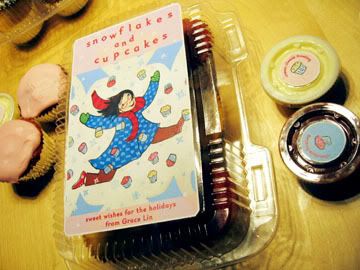

The food that inspires my best work is candy, preferably candied ginger, but any candy will do. Somehow, I need constant sugar when I am writing. During the writing of my most recent novel, I went through at least a bag of candied ginger a day. Now that I think about it, that's kind of horrifying. But true.
I am intrigued by your wish to be a cake decorator. Which do you like best -- baking, decorating, or eating cupcakes?
Preference order: decorating, eating, baking.

Grace's special Thanksgiving turkey cupcakes
The trick to good cupcakes is to use foil cups, not paper ones. The foil ones keep the cake moist and light. Another good tip is to always substitute all purpose flour with cake flour. Cake flour gives the cake a more delicate texture, but if you make the switch it is one cup plus 2 tablespoons of cake flour for every one cup of all purpose flour.
In honor of all the candied ginger I ate during the writing of my latest novel (I am starting to think maybe I should make mention of it in the dedication), I will share my gingerbread cupcake with candied ginger icing recipe:
GINGERBREAD CUPCAKES
1 stick unsalted butter, room temp
1/4 cup dark brown sugar
1/4 cup granulated sugar
1 large egg
2/3 cup molasses
2 tsp lemon zest
2-1/2 cups all purpose flour
1-1/2 tsp baking soda
1 tsp ground cinnamon
1-1/4 tsp ground ginger
1/2 tsp ground cloves
1 cup sour cream
1. Preheat oven to 375. Insert liners into cupcake pan (use foil liners!).
2. In large bowl, cream the butter and sugars together until fluffy. Add egg, molasses and lemon zest. Beat well.
3. In a separate bowl, combine flour, baking soda, cinnamon, ginger & cloves (if you substitute for cake flour it is 2-1/2 cups plus 5 T of cake flour).
4. Add portions of dry ingredients to creamed mixture, alternating with portions of sour cream until completely integrated.
5. Fill cupcake liners 3/4 full. Bake for 15-20 minutes or until inserted toothpick comes out clean. Cool in pan.
CANDIED GINGER ICING
1 8-oz pkg cream cheese, room temp
3/4 stick of unsalted butter, room temp
3 cups confectionary sugar
1 tsp vanilla extract
1 tsp ground ginger
handful of candied ginger, finely chopped
1. In a medium bowl cream together cream cheese and butter until smooth.
2. Slowly sift in confectionary sugar and ground ginger until there are no more lumps.
3. Mix vanilla and candied ginger until fully integrated.
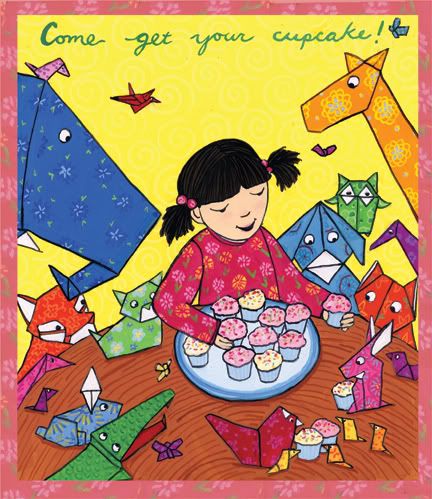
For more about Grace and her work, visit her beautiful website. There you will find detailed information about school visits, reviews, coloring pages and crafts, "behind the book" tidbits, essays, a press kit, FAQ's and other fun stuff.
Grace is one of ten authors being featured at Fusion Stories, celebrating Asian Pacific American Heritage Month during May 2008. Read more about The Year of the Rat and other new novels for middle grade and teen readers that focus on the contemporary Asian Pacific American experience!
Grace is also an avid blogger -- you can find her at Blue Rose Girls, or at her personal blog, A Solitary Grace.
Some other online interviews featuring Grace Lin:
Seven Impossible Things Before Breakfast
The Edge of the Forest March/April '07 issue with Pam Coughlan (MotherReader)
Cynsations
Jade Magazine.com
 SPECIAL BOOK DRAWING!
SPECIAL BOOK DRAWING!Grace will be signing two copies of The Year of the Rat for two lucky people who leave a comment here no later than Wednesday, May 7, 2008. The books will be sent to her for personalization, so if you already own a copy, think in terms of a gift for someone special!
Blog: jama rattigan's alphabet soup (Login to Add to MyJacketFlap)
JacketFlap tags: proust, tea party, madeleine, Add a tag
"My greatest adventure was undoubtedly Proust.
What is there left to write after that?" ~ Virginia Woolf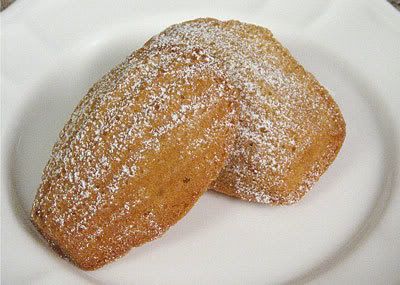
Bonjour, Mon Amis!
Today I feel a certain je ne sais quoi.
It began right after I dipped my madeleine into a cup of linden tea.
This is dangerous, I know.
A certain Valentin Louis Georges Eugene Marcel Proust once did this, and he ended up writing 3200 pages.
That's right. A few crumbs soaked in tea provoked a flood of memories, which became seven volumes* entitled, A La Recherche du Temps Perdu (Remembrance of Things Past, or, more recently translated as, In Search of Lost Time). Published between 1913-1927, this semi-autobiographical novel is the longest ever written. Ever.
Have you read any of it?
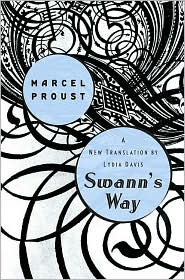
A new translation of Volume I
Still, I like the tea and madeleine part. I also think that involuntary memory is a pretty cool thing. If you just happen to encounter the right inanimate object, it may provoke a complete memory, pure and untainted, just ripe for your creative powers to turn into art:
She sent for one of those squat, plump cakes called petites madeleines that look as though they have been molded in the grooved valve of a scallop shell . . . I carried to my lips a spoonful of the tea in which I had let soften a bit of madeleine. But at the very instant when the mouthful of tea mixed with cake crumbs touched my palate, I quivered, attentive to the extraordinary thing that was happening inside me. A delicious pleasure had invaded me, isolated me, without my having any notion as to its cause . . .
And suddenly the memory appeared. That taste was the taste of the little piece of madeleine which on Sunday mornings at Combray . . . when I went to say good morning to her in her bedroom, my aunt Leonie would give me after dipping it in her infusion of tea or lime blossom . . . as in that game in which the Japanese amuse themselves by filling a porcelain bowl with water and steeping it in little pieces of paper until then undifferentiated which, the moment they are immersed in it, stretch and bend, take color and distinctive shape, turn into flowers, houses, human figures, firm and recognizable, so now all the flowers in our garden and in M. Swann's park, and the water lilies on the Vivonne, and the good people of the village and their little dwellings and the church and all of Combray and its surroundings, all of this, acquiring form and solidity, emerged, town and gardens alike, from my cup of tea. ~ from SWANN'S WAY, by Marcel Proust, translated by Lydia Davis (Viking, 2002).
A great disparity exists between Proust's real life and his art. He was a sickly, asthmatic child with an unnatural attachment to his mother -- a spoiled sycophant, a poseur, a snob and a hypocrite who squandered his youth trying to gain favor with the idle rich. He wasted his father's money, suffered a series of unhappy affairs (he was a closet homosexual), and berated himself for not being born into the aristocracy.
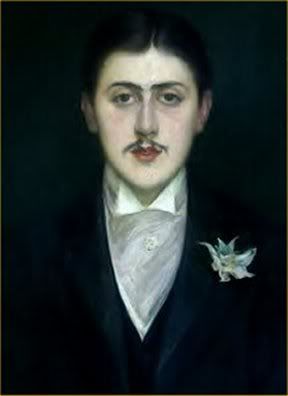
His mother had a huge influence on his imagination and use of memory in writing, but he was not able to effectively bring this retrospective aspect into his work until after she died. While the presence of a person, object, or location provides sensory stimulation, it is the absence of the same that actually catalyzes the imagination -- enabling it to sift, enlarge, and shape experience into a form resembling art.
Because of his severe asthma, Proust lived in forced confinement for over a decade, sometimes never leaving his cork-lined bedroom for weeks at a time. There, he transformed a wasted life into a masterwork that explored the many dimensions, layers, and textures possible of his chosen genre. His international reputation as the most influential novelist of the 20th century remains undiminished.
With today's renewed interest in the memoir, Proust is as popular as ever. Hardcore devotees, such as the members of the Proust Society, meet regularly to discuss the novel in manageable pieces, often devoting years to reach completion. Ultimately, Proust has something for everyone. A 25-year-old reader once called his Remembrance "the ultimate blog."
MADELEINES
(12 servings)

2 eggs
3/4 tsp vanilla extract
1/8 tsp salt
1/3 cup white sugar
1/2 cup all purpose flour
1 T lemon zest
1/4 cup butter
powdered sugar for decoration
1. Preheat oven to 375 degrees. Butter and flour 12 madeleine molds; set aside.
2. Melt butter and let cool to room temperature.
3. In a small mixing bowl, beat eggs, vanilla and salt at high speed until light.
4. Beating constantly, gradually add sugar, and continue beating at high speed until mixture is thick and pale and ribbons form in bowl when beaters are lifted, 5 to 10 minutes.
5. Sift flour into egg mixture 1/3 at a time, gently folding after each addition.
6. Add lemon zest and pour melted butter around edge of batter. Quickly but gently fold butter into batter. Spoon batter into molds; it will mound slightly above tops.
7. Bake 14 to 17 minutes, or until cakes are golden and the tops spring back when gently pressed with your fingertip.
8. Use the tip of the knife to loosen madeleines from pan; invert onto rack. Immediately sprinkle warm cookies with powdered sugar. Madeleines are best eaten the day they're baked.
9. Variation: Chocolate Madeleines: Omit lemon zest. Increase sugar to 1/2 cup. Substitute 1/4 cup unsweetened cocoa powder for 2 T of the flour; sift into batter with flour.
TIPS: Lemon-butter flavor is enhanced when madeleine is dipped into lime-flower (linden) tea, aka tilleul. Savor the experience, and record your memories!

SSHHHH! Don't tell! There is evidence to suggest that Proust did not eat a madeleine, but a soggy piece of toast instead. Tant pis!
* In Search of Lost Time - Volume Titles:
Swann's Way
Within a Budding Grove
The Guermantes Way
Sodom and Gomorrah
The Captive
The Fugitive
Time Regained
Blog: jama rattigan's alphabet soup (Login to Add to MyJacketFlap)
JacketFlap tags: pooh, tea party, jeannine atkins, Add a tag
"By-and-by Pooh and Piglet went on again. Christopher Robin was at home by this time, because it was the afternoon, and he was so glad to see them that they stayed there until very nearly tea-time, and then they had a Very Nearly tea, which is one you forget about afterwards, and hurried on to Pooh Corner, so as to see Eeyore before it was too late to have a Proper Tea with Owl." ~ from THE HOUSE AT POOH CORNER, by A.A. Milne (E.P. Dutton & Co., 1928).
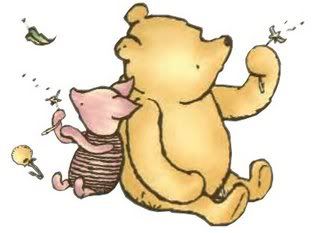
The other morning I was feeling a little odd.
It was almost eleven and I needed a little smackerel of something.
Just in time, I received this lovely email from author Jeannine Atkins ( ![]() jeannineatkins):
jeannineatkins):
Jama, this is my favorite scone recipe, which I doubled and brought into my children's literature class after reading WINNIE-THE-POOH and feeling like we needed 'a little something.' One student said he was happy to 'walk into class and see two big cookie-like things on the table.'
Rum-tum-tiddle-um-tum!
Scones!
No tea party would be complete without them. Whether you pronounce it skon to rhyme with John (as in most of the UK), or skoan to rhyme with Joan (as in the U.S.), there's no denying their appeal. Split them in half while they're still warm, lay on the butter, strawberry jam, and clotted cream (if you're lucky), and you've got home and heaven in one little cake!
Scones, originally from Scotland, are perfect anytime -- breakfast, elevenses, very nearly tea, or proper afternoon tea. Make them plain with cream, milk or buttermilk, add fruit or even chocolate chips -- then roll and cut them into little rounds, or pat the dough onto a sheet, and cut in wedges. They can be baked or dropped on a griddle. Your tum-iddle-um will thank you.
When Jeannine's students walked into the classroom, they probably felt like this:
When you've been walking in the wind for miles, and you suddenly go into somebody's house, and he says, 'Hello, Pooh, you're just in time for a little smackerel of something,' and you are, then it's what I call a Friendly Day.
Very friendly Jeannine has written quite a few fabulous books herself, the latest of which is Anne Hutchinson's Way (FSG, 2007). In this historical fiction picture book (illustrated by Michael Dooling), Anne leaves England with her husband and ten children for the Massachusetts Colony, seeking religious freedom.

ANNE HUTCHINSON'S WAY by Jeannine Atkins,
illustrated by Michael Dooling (FSG, 2007), ages 9-12
When she disagrees with the minister's ways, Anne holds meetings in her own home to preach the gospel herself. Told from her daughter Susanna's point of view, this inspiring story of a strong woman who believed in the freedom of speech, was recently named a 2008 Amelia Bloomer Project Recommended Title, one of 32 books which encourages girls to be "smart, brave, and proud."
Jeannine has written several other wonderful books about strong girls and women, such as Aani and the Tree Huggers (Lee and Low, 2000), Girls Who Looked Under Rocks: The Stories of Six Pioneering Naturalists (Dawn, 2000), and How High Can We Climb: The Story of Women Explorers (FSG, 2005). All reflect Jeannine's love of history, research, and personal interest in feminism.
So, next time you crave a little something, mix up a batch of Jeannine's scones, pour yourself a cup of your favorite tea (maybe Republic of Tea's All Day Breakfast or Assam Breakfast ), and curl up with one of her books. It'll get you humming, and may even inspire you to greater things. What could be friendlier?
DRIED FRUIT SCONES
from Jeannine Atkins

1-1/4 cups all purpose flour
1/4 cup whole wheat flour
1/4 cup light brown sugar
2 tsp cream of tartar
1 tsp baking soda
1/2 tsp salt
1/2 cup butter, cut in bits
1-1/4 cups mixed dried fruit: chopped apricots, dried cranberries or cherries, and raisins
1/4 cup heavy cream
1 large egg
Preheat oven to 400 degrees. Grease baking sheet. Combine dry ingredients, then cut in butter with pastry blender or two knives until mixture resembles cornmeal. Mix in fruit. Combine cream and egg, then pour into the flour mixture. Stir with a fork just until the dough forms a ball. Pat this into a round and squash about 8 inches wide. Cut about halfway through into twelve wedges and put it on the baking sheet. Bake about twenty minutes until golden.
Visit Jeannine's Website and Blog for more about her books!
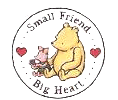 Come and join the Tea Party! Post your recipe and leave the link in the comments, or email your recipe to: readermail (at) jamakimrattigan (dot com). We'd love a little smackerel from you!
Come and join the Tea Party! Post your recipe and leave the link in the comments, or email your recipe to: readermail (at) jamakimrattigan (dot com). We'd love a little smackerel from you!Blog: jama rattigan's alphabet soup (Login to Add to MyJacketFlap)
JacketFlap tags: tea party, sir paul, Add a tag
Blog: jama rattigan's alphabet soup (Login to Add to MyJacketFlap)
JacketFlap tags: poetry friday, tea party, jane kenyon, Add a tag
"There is a great deal of poetry and fine sentiment in a chest of tea." ~ Ralph Waldo Emerson
The first cup moistens my lips and throat;
The second cup breaks my loneliness;
The third cup searches my barren entrail but to
find therein some five thousand volumes
of odd ideographs;
The fourth cup raises a slight perspiration --
all the wrongs of life pass out through my pores;
At the fifth cup I am purified;
The sixth cup calls me to the realms
of the immortals.
The seventh cup -- ah, but I could take no more!
I only feel the breath of the cool wind
that raises in my sleeves.
Where is Elysium? Let me ride on this sweet breeze
and waft away thither.
~ Lu T'ung, T'ang Dynasty 620-907
Did you enjoy sipping this poem, line by line?
I thought it was the perfect way to launch Tea Party Month here at alphabet soup. After all, tea and poetry are sisters. Both should be savored slowly for full appreciation. Both heighten the senses, invite conversation, and prompt reflection.
When you drink a cup of tea or read a poem, you are participating in a ritual that dates back thousands of years. Interestingly enough, the origin of tea is much like the origin of a poem.
In 2737 B.C., as the legend goes, the Chinese Emperor Chen Nung, a scholar and herbalist, was sitting beneath a tree while his servant was boiling a pot of water. A few leaves from a tea plant dropped into the water, and a wonderful aroma emanated. The drink enthralled and enchanted him. His writings touted the medicinal benefits of tea -- a drink that healed, uplifted, refreshed and quenched a thirst like no other.
A poem can heal, uplift, refresh, and quench a thirst like no other. Often, quite by accident, an idea floating on a gentle breeze will enter the mind. If allowed to steep, it may find its fragrance and substance amongst the "thousand volumes of odd ideographs" that each of us carries within. Just as a drifting cloud marks the path of invisible air, the words of a poem authenticate human emotion -- making the abstract more tangible, giving voice to some of the more ethereal, capricious, and unwieldy textures of experience.
We all yearn for a magic potion, much like we yearn to find part of ourselves in a poem. So we are not unlike the ancients. Tea and poems connect us all, through time and space.
Now, will you have a second cup?
BRIEFLY IT ENTERS, AND BRIEFLY SPEAKS
by Jane Kenyon (from Boat of the Quiet Hours, Graywolf Press, 1986)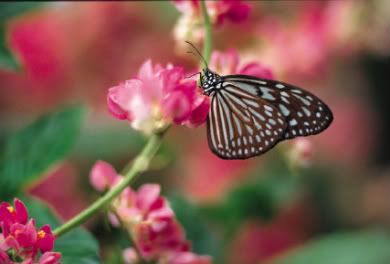
I am the blossom pressed in a book,
found again after two hundred years . . .
I am the maker, the lover, and the keeper . . .
When the young girl who starves
sits down to a table
she will sit beside me . . .
(Rest is here.)
Today's Poetry Friday Roundup is at Becky's Book Reviews.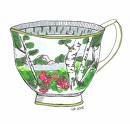 PLEASE COME TO THE TEA PARTY!
PLEASE COME TO THE TEA PARTY!
Post your favorite tea time recipes, tea reflections or memories, or favorite tea scenes from books or film, then leave the link in the comments. Or, you may email the recipes to me at readermail (at) jamakimrattigan (dot com). The party will last all through April, so don your bonnets and white gloves, and sashay on over!
Blog: OUPblog (Login to Add to MyJacketFlap)
JacketFlap tags: sark, channel, feudalism, carts, locomotion, microstates, principalities, blog, oxford, Geography, maps, A-Featured, Ben's Place of the Week, atlas, ben, bicycles, keene, Add a tag
Sark, United Kingdom
Coordinates: 49 25 N 2 22 W
Approximate area: 2 square miles (5 sq km)
Times change, and with them, people and places are carried along on the tide of modernization. But not always. On the tiny island of Sark in the English Channel, feudalism has clung, virtually unnoticed, to its rocky shores since the Middle Ages. In fact, this hereditary form of rule hung on long enough to make it the only feudal territory left on Europe, a continent known (among political geographers at least) for its microstates and puny principalities. (more…)



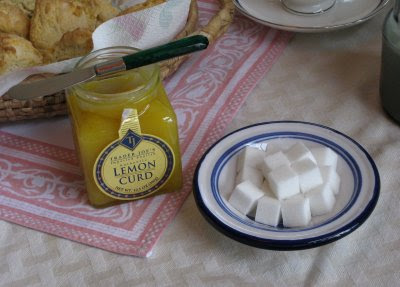
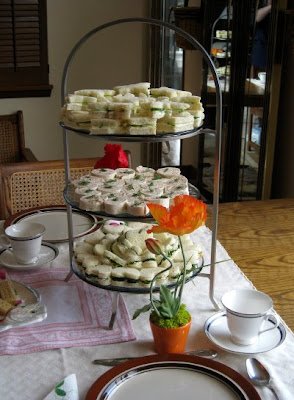




Happy Birthday SF! Enjoy your day! I hear that 40 is the new 30.
Katie, I want you to come to Vegas for my next birthday! I love the themed party! How thoughtful and creative.
Happy Birthday SF! You are SO hot for 40. Absolutely fabulous.
And Katie, is that your pet squirrel? Whatever happened to him anyways? And you're such a good friend/southern belle hosting a tea party for your bestie's b-day. Love it.
So Cool..Happy Birthday SF..your photos are striking and I hope that you would enjoy this special one.
Thanks Katie for the nice post.
Happy B-day!! And the squirrel is tres-creepy...love the theme!!!!
You guys are TOO MUCH! Love the theme, the dead roses, the stuffed squirrel, the general beautiful creepiness.
Happy birthday, Sarah Frances! Have a wonderful gothy birthday week!
xo,
Christy
Cute, cute, Cute!!! HAPPY BIRTHDAY, Sarah Frances!!!!!!! You two have a blast!
Lawsy, that was so much fun! I look like I'm crying haha!!
I was totally over served and had to take a nap immediately following brunch. Thank goodness I only had to walk from the kitchen to the bedroom :-)
Can't wait for part two tomorrow!
Oh NOW I know why you were looking for long gloves! You look fab!
Happy Birthday SF! I'm right behind ya!
:-)
Thanks to you all! Yesterday was so much fun! Now, I'm going to go all girly-girl for lunch with the girls!
sf
Happy Birthday! Hope your day is great -- looks like a lot of fun.
(Faulkner would be proud -- dead roses, Goth -y creepiness ---)
40 is the new 30! And you should ROCK IT!
Big Happy Birthday to SF!! I'm thinking 40 calls for even more than a week celebration. Think you can drag this thing out a MONTH? Come on. 40 year olds can do ANYTHING. xxxxooooo